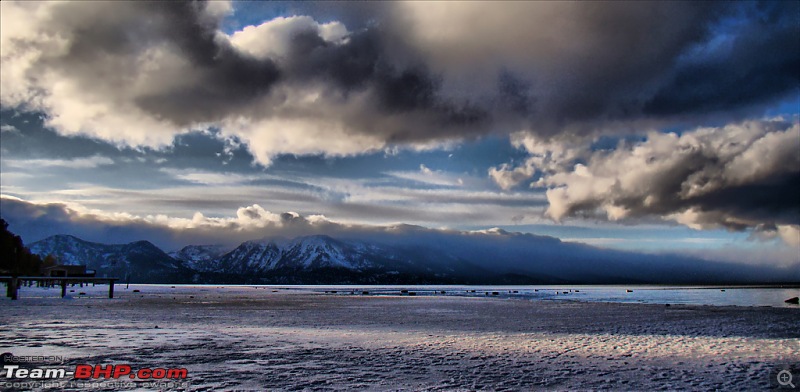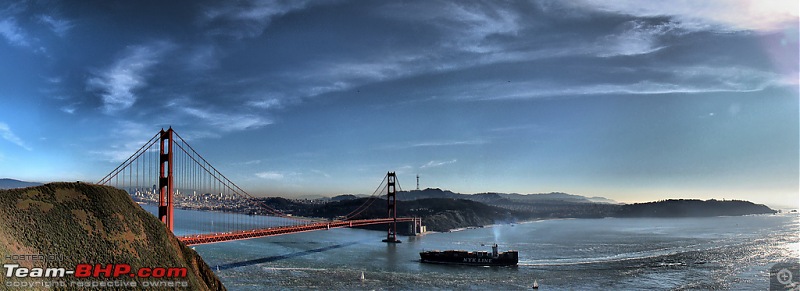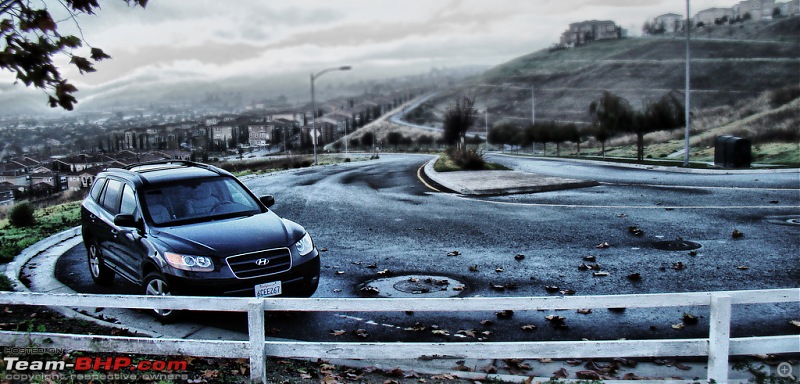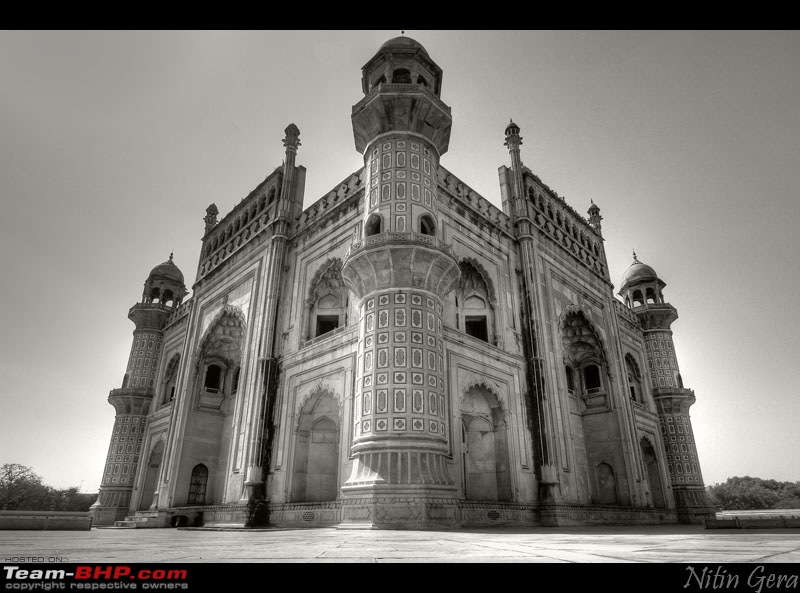
 |
|
Originally Posted by NomadVagabond
(Post 1247476)
Well, the largest photograph ever to be shot was shot using a pinhole camera. So, kindly don't underestimate the capabilities of such equipment. |
|
Originally Posted by NomadVagabond
(Post 1247476)
Many of the greatest photographers on date still use film instead of digital. Because they prefer to NOT that they can't afford or can't get their hands on the latest equipment. |
|
Originally Posted by StarScream
(Post 1247453)
The tools work only when the person using them knows how to extract the best from them. The only extreme analogy here is the pinhole camera one:uncontrol. I never said that a pro doesn't need top-of-the-line equipment. What I said was that he can make magic with equipment that may surprise us amateurs. Because apart from composition skills he understands the limitations of the equipment and how to use it best. I would still place my bet on the pro with the p&s compared with the novice with the Dslr. Over the years I've had a chance to work with and learn from many pros - from fashion photographers to industrial photographers and photo journalists, big names all - one thing stood out: their general indifference when it came to equipment. They didn't always pick the latest and greatest, although they may own it, if a so-called inferior lens served the purpose better. And the results were always stunning. This behavior made me a realize a couple of home truths: #Amateurs fret and bother about equipment a lot more than pros do. #Novices are prone to blame their equipment for their poor pictures, believing they would have done better if they had better equipment. This makes many who can afford it gear heads, and not necessarily better photographers. #Things like lens tests are a waste of time because folks who make a living from photography bother more about getting the shot than what is used to get the shot. #The best equipment in inexperienced hands will produce average photographs. #Learning to see (beyond equipment and to the point where equipment become secondary) takes time, patience and perseverance. Now, this may be true for the types of photographers I've dealt with. Two important exceptions where newer, faster, longer are better and second-best puts you at a disadvantage are wildlife and sports. |
|
Originally Posted by NomadVagabond
(Post 1247476)
So very well said. It's all about the right combination of both things. The right person mated with the right tools of trade. Well, the largest photograph ever to be shot was shot using a pinhole camera. So, kindly don't underestimate the capabilities of such equipment. Many of the greatest photographers on date still use film instead of digital. Because they prefer to NOT that they can't afford or can't get their hands on the latest equipment. With all due respect to Rudra sir. It's his skills which makes him a better photographer. The equipment is merely a medium to convey his thoughts into images. Given a shot I'm very sure he can produce similar mind blowing photographs even with a simple P&S. This is the exact mind though I have regarding photography. Before you need to perfect yourself then jump to get onto better equipment. In the classes I teach I've always suggested for learners to start with their kit lens and maybe a cheap 70-300 and learn the basics. Get good results out of them and then jump onto better equipment. I got great pics from the same lens so why can't others? A monkey will always stay a monkey no matter he's given a Ferrari to drive and the output will always be bananas. You need a Schumi and a Ferrari together to win a GP. You miss either and you end up with crap. @ Starscream. Can I print out the points you've listed out here? I'd like to share these with some of the chaps taking the class from me these days. Because many of them crib about their equipment a lot.:D Regards, Anirban. |
|
Originally Posted by Samurai
(Post 1247603)
NomadVagabond & StarScream, since 2008 I have upgraded two things in my camera kit. Since you guys are experts, let me know how you guys could have avoided the upgrade and yet overcome the problem. 1) I upgraded the dSLR body because my eariler dSLR body was not auto focusing at low light, had high noise at higher ISOs and no IS ability. In other words, low light photography was always a challenge with it and I love low-light photography. Check this low-light action photography with old equipment: https://www.team-bhp.com/forum/trave...lo-racing.html 2) I upgraded my walkaround lens from 14-54mm F/2.8-3.5 to 12-60mm F/2.8-4, which changed my effective max wide angle from 28mm to 24mm. I did this because I wanted to cover more without having to backing into walls or falling off cliffs. And it has really added lot more flexibility to my composition, especially in confined spaces. For example, this 24mm shot would have been impossible in even 28mm. The composition of the car and the overlooking hill with thorny bushes at my back. Now tell me how you guys could have easily compensated for lowlight and wideangle challenges without upgrading. C'mon, that is because it is the cheapest or the only way to build such a big camera. And not because it is the best camera. They do that because they have found their comfort zone in film, it is not easy for older professionals to switch to digital one fine day and relearn their trade. In addition, professionals switch equipment only on need basis and not because newer stuff is cooler. |



|
Originally Posted by Torqueguru
(Post 1247757)
Now, regarding the wide angle lens. You can compensate by stitching together multiple shots seamlessly. These images are taken using my point and shoot. Yes it takes a little more time, but perfectly doable. I have produced many a wide image this way. |
|
Originally Posted by Samurai
(Post 1247603)
Now tell me how you guys could have easily compensated for lowlight and wideangle challenges without upgrading. |
|
Originally Posted by Samurai
(Post 1247603)
C'mon, that is because it is the cheapest or the only way to build such a big camera. And not because it is the best camera. |
|
Originally Posted by Samurai
(Post 1247603)
They do that because they have found their comfort zone in film, it is not easy for older professionals to switch to digital one fine day and relearn their trade. In addition, professionals switch equipment only on need basis and not because newer stuff is cooler. |
|
Originally Posted by Torqueguru
(Post 1247757)
Anirban, Yes its so very true that, when you can produce mind blowing results with limited equipment, your understanding of what matters and what doesnt matter increases. And you will know what kind of circumstances are best for your camera. That is so crucial before jumping to a better camera, you need to learn bicycling before you go buy a harley! |
|
Originally Posted by Torqueguru
(Post 1247826)
PS: That ship was moving:D |
|
Originally Posted by NomadVagabond
(Post 1247476)
This is the exact mind though I have regarding photography. Before you need to perfect yourself then jump to get onto better equipment. In the classes I teach I've always suggested for learners to start with their kit lens and maybe a cheap 70-300 and learn the basics. Get good results out of them and then jump onto better equipment. I got great pics from the same lens so why can't others? @ Starscream. Can I print out the points you've listed out here? I'd like to share these with some of the chaps taking the class from me these days. Because many of them crib about their equipment a lot.:D Regards, Anirban. |
|
Originally Posted by Torqueguru
(Post 1247757)
I could not agree with you better. Excellent write up. And like Anirban, I was thinking of the same, I wanted to use some of your literature for my blog!!!! Of course it will be attributed to you! Anirban, Yes its so very true that, when you can produce mind blowing results with limited equipment, your understanding of what matters and what doesnt matter increases. And you will know what kind of circumstances are best for your camera. That is so crucial before jumping to a better camera, you need to learn bicycling before you go buy a harley! |
|
Originally Posted by Samurai
(Post 1247603)
NomadVagabond & StarScream, since 2008 I have upgraded two things in my camera kit. Since you guys are experts, let me know how you guys could have avoided the upgrade and yet overcome the problem. 1) I upgraded the dSLR body because my eariler dSLR body was not auto focusing at low light, had high noise at higher ISOs and no IS ability. In other words, low light photography was always a challenge with it and I love low-light photography. Check this low-light action photography with old equipment: https://www.team-bhp.com/forum/trave...lo-racing.html 2) I upgraded my walkaround lens from 14-54mm F/2.8-3.5 to 12-60mm F/2.8-4, which changed my effective max wide angle from 28mm to 24mm. I did this because I wanted to cover more without having to backing into walls or falling off cliffs. And it has really added lot more flexibility to my composition, especially in confined spaces. For example, this 24mm shot would have been impossible in even 28mm. The composition of the car and the overlooking hill with thorny bushes at my back. Now tell me how you guys could have easily compensated for lowlight and wideangle challenges without upgrading. |
|
Originally Posted by StarScream
(Post 1247453)
The only extreme analogy here is the pinhole camera one:uncontrol. I never said that a pro doesn't need top-of-the-line equipment. What I said was that he can make magic with equipment that may surprise us amateurs. Because apart from composition skills he understands the limitations of the equipment and how to use it best. I would still place my bet on the pro with the p&s compared with the novice with the Dslr. |
|
Originally Posted by StarScream
(Post 1247453)
Over the years I've had a chance to work with and learn from many pros - from fashion photographers to industrial photographers and photo journalists, big names all - one thing stood out: their general indifference when it came to equipment. They didn't always pick the latest and greatest, although they may own it, if a so-called inferior lens served the purpose better. And the results were always stunning. |
|
Originally Posted by StarScream
(Post 1247453)
This behavior made me a realize a couple of home truths: #Amateurs fret and bother about equipment a lot more than pros do. #Novices are prone to blame their equipment for their poor pictures, believing they would have done better if they had better equipment. This makes many who can afford it gear heads, and not necessarily better photographers. #Things like lens tests are a waste of time because folks who make a living from photography bother more about getting the shot than what is used to get the shot. #The best equipment in inexperienced hands will produce average photographs. #Learning to see (beyond equipment and to the point where equipment become secondary) takes time, patience and perseverance. Now, this may be true for the types of photographers I've dealt with. Two important exceptions where newer, faster, longer are better and second-best puts you at a disadvantage are wildlife and sports. |
|
Originally Posted by Torqueguru
(Post 1247757)
Now, regarding the wide angle lens. You can compensate by stitching together multiple shots seamlessly. These images are taken using my point and shoot. Yes it takes a little more time, but perfectly doable. I have produced many a wide image this way. |

|
Originally Posted by Samurai
(Post 1247603)
They do that because they have found their comfort zone in film, it is not easy for older professionals to switch to digital one fine day and relearn their trade. |
|
Originally Posted by extreme_torque
(Post 1248210)
If you have seen shots from a wide angle lens, say 10-22 there is a particular perspective that the image comes with where your subject sort of zooms out. You just cant achieve the same by stiching. Offcourse nothing is impossbile in photoshop but I am not the one to spend hours and hours sitting in front and editing to give my images 'that' look. I am taking the liberty of posting a pic from my friend's camera to make clear what I mean by that perspective. Attachment 121300 |
|
Originally Posted by Torqueguru
(Post 1248229)
@Extreme See you are talking of certain very niche perpective given by a particular lens, I understand you perfectly. Photography has much more to it than a certain "look" achieved by using a particular lens. Good gear definitely matters for a pro, but to reach that level...the minimalistic approach works best. Thats all what my point is. Going for a DSLR when u are interested in photography, without using a basic digital cam may work , but going the other route helps you learn much more. A person who has walked for miles will apreciate and also make better use of a car when he earns one. Its the same principle. Peace out. And yeah, when you are extremely passionate about anything, speding hours is like speding a few minutes. I go through it every single day. But again, time is valuable so is money and its always a trade off between the two when it comes to photography. |
|
Originally Posted by extreme_torque
(Post 1248198)
Lets ask a pro to click a bird using 18-200 at 200mm and I click the same using 70-200 at the same, 200mm... who would fare better? Limitations are sometimes just that and there is no way to overcome those and thats when you 'need' better equipment. Extreme, thank you for bringing what became a general discussion about photography back to your pet peeve - the 18-200. Why would you use an 18-200 to shoot birds? I said it is a great travel lens. Still, I'll take you up on that. Assuming you are shooting at equivalent apertures i.e. 5.6 and above, I would say the pro has a very good chance of getting the superior shot. One major factor in favor of the 18-200 is, being a lighter lens it's much easier to handle. Care to elaborate, there are too many may's, didnt always in there. Too much ambiguity. The fact is most of the pro's own pro level equipment but offcouse they decide to buy them because their earlier equipment just wasnt good enough. For a pro equipment is always taken for granted. They wouldn't announce the equipment they used to click a particular shot but let the shot do the talking. I will. I have seen people shoot a double-spead lead picture in a magazine with a $350 lens. The $1,100 pro lens sat in the bag because it was too heavy and cumbersome for use at that particular moment. For example an 18-200 mm would be useless for bird photography and try as hard as you may, you wont get the same results as 70-200 L, let alone a higher spec lens. Sigh...there we go back to the 18-200 and birds again. I give up - it is a lousy lens for shooting birds. You are assuming things a few things here. Firstly, we have all started with a DSLR without working with the humble point and shoot and are now cribbing about the gear because we cant take good photographs. The fact: we have come from point and shoot after knowing their absolute limitations and now that we have found out the limitation of our current DSLR gear we have upgraded or in the process of upgrading. |

|
Originally Posted by Samurai
(Post 1248321)
There is another thing, shooting comfort. My first camera was a used Minolta SLR handed down by my uncle in 1989. It had a 50mm prime lens, manual focus, no TTL metering, no flash, and I don't think it even had a battery. So forget all automatic functions. But it had one life saver, DOF preview button, which when pressed would give the idea about exposure and DOF. Initially it was so difficult to take photographs with it, eventually my brother and I figured how to shoot with it. Each shot had to be composed very carefully, first pick the F-stop, then the shutter speed, then slowly turn the dial to focus the object, press the DOF-preview button to see whether the exposure is acceptable, if not adjust F-stop and speed for better exposure, preview again and then click. Then I didn't have understanding of the zone-system, but if the scene was illuminated any closer to reality, it was acceptable. It took at least 30-60 seconds to shoot one frame. When I bought my first new camera in 1993, the fixed lens SLR Olympus IS-3 DLX, it was like upgrading from Maruti 800 to Merc. It had AF, 35-180mm zoom, TTL metering, spot metering, the A, P, S, M and even macro shooting modes. This was my primary camera until 2001. Olympus IS-3 DLX Reviews Obviously the quality of my shots dramatically improved since I could focus on composition rather than fiddling with all the controls to get the right image. There was not much difference in my photography knowledge between these cameras, but the modern equipment let me focus on composition. A old photo from the Olympus IS-3. Attachment 121412 |
| All times are GMT +5.5. The time now is 17:17. |